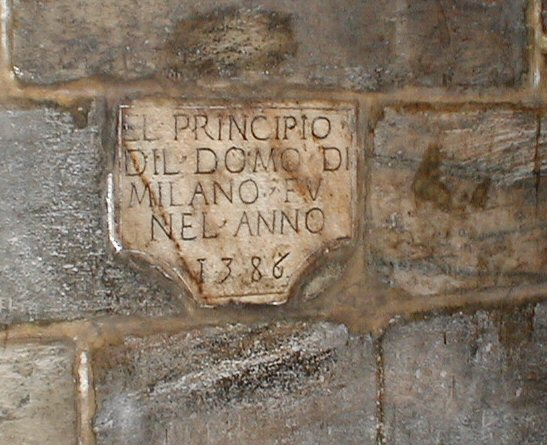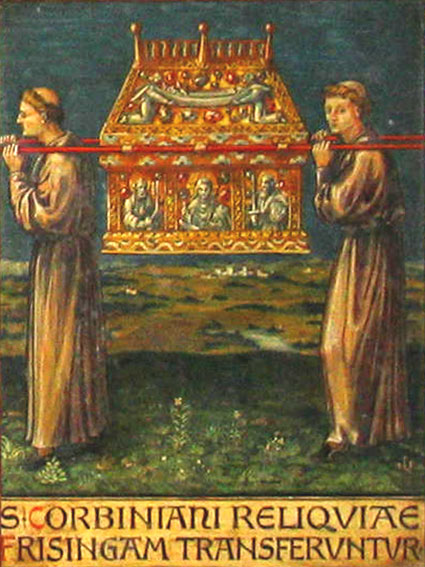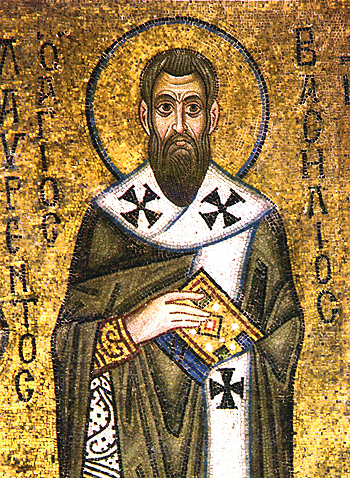|
Dionysius (bishop Of Milan)
Dionysius () was bishop of Milan from 349 to 355. He is honoured as a Saint in the Catholic and Eastern Orthodox churches and his feast day is 25 May. Life Almost nothing is known about the life of Dionysius before his election as bishop of Milan, which took place in 349. Dionysius was probably of Greek origin. He was a friend of the Roman Emperor Constantius II before being elected bishop of Milan. The historical period in which Dionysius lived was marked by clashes between Arians and the supporters of the faith of the Council of Nicaea. Even Emperor Constantius II favored Semi-Arian doctrines. In 355 Pope Liberius requested the Emperor to convene a Synod in Milan, which was held in the newly erected Basilica Nova (or Basilica Maior or St. Tecla). The council however did not accomplish the hopes of the Pope due to the overwhelming number of Arian bishops present and the enforced absence of the champion of the Nicaean faith, Eusebius of Vercelli. Initially Dionysius seem ... [...More Info...] [...Related Items...] OR: [Wikipedia] [Google] [Baidu] |
Cathedral Of Milan
Milan Cathedral ( ; ), or Metropolitan Cathedral-Basilica of the Nativity of Saint Mary (), is the cathedral church of Milan, Lombardy, Italy. Dedicated to the Nativity of St. Mary (), it is the seat of the Archbishop of Milan, currently Archbishop Mario Delpini. The cathedral took nearly six centuries to complete: construction began in 1386, and the final details were completed in 1965. It is the largest church in the Italian Republic—the larger St. Peter's Basilica is in the State of Vatican City, a sovereign state—and one of largest in the world. History Milan's layout, with streets either radiating from the Duomo or circling it, reveals that the Duomo occupies what was the most central site in Roman Mediolanum, that of the public basilica facing the forum. The first cathedral, the "new basilica" (') dedicated to St Thecla, was completed by 355. It seems to share, on a slightly smaller scale, the plan of the contemporaneous church recently rediscovered beneat ... [...More Info...] [...Related Items...] OR: [Wikipedia] [Google] [Baidu] |
Synod Of Milan
The Synod of Milan or Council of Milan may refer to any of several synods which occurred in late Roman Mediolanum or medieval Milan in northern Italy's Po valley: Synod of 345 In 353 or 354, Pope Liberius wrote thus: ''"Eight years ago the Eusebian deputies, Eudoxius and Martyrius (who came to the West with the formula ), refused to anathematize the Arian doctrine at Milan"''. But the Synod of Milan here alluded to is placed about the year 345, soon after the Synod of Sardica. Maximin of Trier was at this synod. Synod of 355 Lucifer of Cagliari was deputed by Pope Liberius, with the priest Pancratius and the deacon Hilary, to request the Emperor Constantius to convene a council, to deal with the accusations directed against St. Athanasius and his previous condemnation. This council was convened at Milan in the newly erected Basilica Nova (or Basilica Maior or St. Tecla). The council however did not follow the hopes of the Pope due to the overwhelming number of Arians b ... [...More Info...] [...Related Items...] OR: [Wikipedia] [Google] [Baidu] |
Parish
A parish is a territorial entity in many Christianity, Christian denominations, constituting a division within a diocese. A parish is under the pastoral care and clerical jurisdiction of a priest#Christianity, priest, often termed a parish priest, who might be assisted by one or more curates, and who operates from a parish church. Historically, a parish often covered the same geographical area as a Manorialism, manor. Its association with the parish church remains paramount. By extension the term ''parish'' refers not only to the territorial entity but to the people of its community or congregation as well as to church property within it. In England this church property was technically in ownership of the parish priest ''Ex officio member, ex officio'', vested in him on his institution to that parish. Etymology and use First attested in English in the late 13th century, the word ''parish'' comes from the Old French , in turn from , the Romanization of Greek, Romanisation of ... [...More Info...] [...Related Items...] OR: [Wikipedia] [Google] [Baidu] |
Porta Venezia
Porta Venezia (; "Venice Gate"), formerly known as Porta Orientale ("Eastern Gate"), Porta Renza ("Laurence Gate") and by other names, is one of the historical gates of the city of Milan, Italy. In its present form, the gate dates back to the 19th century; nevertheless, its origins can be traced back to the medieval and even the Roman walls of the city. The name ''Porta Venezia'' is commonly used to refer both to the gate proper and to the surrounding district (), part of the Zone 3 of Milan. The Porta Venezia area is known today as the LGBT-friendly district of Milan: Via Lecco and its surroundings are Milan's "Gay Street" with LGBT or LGBT-themed bars and restaurants. In 2019, after a commercial advertisement campaign by Netflix Italia for the 2018 Milano Pride, Mayor Giuseppe Sala announced that the Porta Venezia metro station would have become a Rainbow Station, thanks to the agreement with the ATM metro service: the rainbow colored wallpaper would have been indefinitely ... [...More Info...] [...Related Items...] OR: [Wikipedia] [Google] [Baidu] |
Milan
Milan ( , , ; ) is a city in northern Italy, regional capital of Lombardy, the largest city in Italy by urban area and the List of cities in Italy, second-most-populous city proper in Italy after Rome. The city proper has a population of nearly 1.4 million, while its Metropolitan City of Milan, metropolitan city has 3.2 million residents. Within Europe, Milan is the fourth-most-populous List of urban areas in the European Union, urban area of the EU with 6.17 million inhabitants. According to national sources, the population within the wider Milan metropolitan area (also known as Greater Milan) is estimated between 7.5 million and 8.2 million, making it by far the List of metropolitan areas of Italy, largest metropolitan area in Italy and List of metropolitan areas in Europe, one of the largest in the EU.* * * * Milan is the economic capital of Italy, one of the economic capitals of Europe and a global centre for business, fashion and finance. Milan is reco ... [...More Info...] [...Related Items...] OR: [Wikipedia] [Google] [Baidu] |
Translation (relic)
In Christianity, the translation of relics is the ceremonial removal of holy objects from one place to another (usually a higher-status location). Usually only the movement of the remains of a saint's body would be treated so formally, with secondary relics such as items of clothing treated with less ceremony. Translations could be accompanied by many acts, including all-night vigils and processions, often involving entire communities. The solemn translation (in Latin, ) of relics is not treated as the outward recognition of sanctity. Rather, miracles confirmed a saint's sanctity, as evinced by the fact that when the papacy attempted to make canonization an official process in the twelfth century, many collections of miracles were written in the hope of providing proof of the saint-in-question's status. In the early Middle Ages, the solemn translation marked the moment at which, the saint's miracles having been recognized, the relic was moved by a bishop or abbot to a prominent po ... [...More Info...] [...Related Items...] OR: [Wikipedia] [Google] [Baidu] |
Ambrose
Ambrose of Milan (; 4 April 397), venerated as Saint Ambrose, was a theologian and statesman who served as Bishop of Milan from 374 to 397. He expressed himself prominently as a public figure, fiercely promoting Roman Christianity against Arianism and paganism. He left a substantial collection of writings, of which the best known include the ethical commentary ''De officiis ministrorum'' (377–391), and the exegetical (386–390). His preaching, his actions and his literary works, in addition to his innovative musical hymnography, made him one of the most influential ecclesiastical figures of the 4th century. Ambrose was serving as the Roman governor of Aemilia-Liguria in Milan when he was unexpectedly made Bishop of Milan in 374 by popular acclamation. As bishop, he took a firm position against Arianism and attempted to mediate the conflict between the emperors Theodosius I and Magnus Maximus. Tradition credits Ambrose with developing an antiphonal chant, known as Ambros ... [...More Info...] [...Related Items...] OR: [Wikipedia] [Google] [Baidu] |
Feast Day
The calendar of saints is the traditional Christian method of organizing a liturgical year by associating each day with one or more saints and referring to the day as the feast day or feast of said saint. The word "feast" in this context does not mean "a large meal, typically a celebratory one", but instead "an annual religious celebration, a day dedicated to a particular saint". The system rose from the early Christian custom of commemorating each martyr annually on the date of their death, their birth into heaven, a date therefore referred to in Latin as the martyr's ''dies natalis'' ('day of birth'). In the Eastern Orthodox Church, a calendar of saints is called a ''Menologion''. "Menologion" may also mean a set of icons on which saints are depicted in the order of the dates of their feasts, often made in two panels. History As the number of recognized saints increased during Late Antiquity and the first half of the Middle Ages, eventually every day of the year had at l ... [...More Info...] [...Related Items...] OR: [Wikipedia] [Google] [Baidu] |
Caesarea Mazaca
Caesarea (Help:IPA/English, /ˌsɛzəˈriːə, ˌsɛsəˈriːə, ˌsiːzəˈriːə/; ), also known historically as Mazaca or Mazaka (, ), was an ancient city in what is now Kayseri, Turkey. In Hellenistic period, Hellenistic and Roman Empire, Roman times, the city was an important stop for Merchant, merchants headed to Europe on the ancient Silk Road. The city was the capital of Cappadocia (Roman province), Cappadocia, and Armenians, Armenian and Cappadocia, Cappadocian kings regularly fought over control of the strategic city. The city was renowned for its bishops of both the Greek Orthodox Church, Greek Orthodox and Armenian Apostolic Church, Armenian Apostolic churches. After the Battle of Manzikert where the Byzantine Empire lost to the incoming Seljuk Empire, the city was later taken over by the Sultanate of Rum and became reconfigured over time with the influences of both Islamic architecture, Islamic and, later, Ottoman architecture. History Superseded trading town An ... [...More Info...] [...Related Items...] OR: [Wikipedia] [Google] [Baidu] |
Lucifer Of Cagliari
St. Lucifer of Cagliari (, ; died 20 May 370 or 371) was a bishop of Cagliari in Sardinia known for his passionate opposition to Arianism. He is venerated as a Saint in Sardinia. Life Lucifer first appears in history as an envoy from Pope Liberius to the Emperor Constantius II, requesting the convening of a church council. At the Council of Milan in 355, he defended Athanasius of Alexandria against Arian attempts to secure his condemnation by Western bishops. It was reported that Constantius II, a supporter of Arian theology, confined Lucifer for three days in the Imperial Palace, where Lucifer continued to argue vehemently on behalf of Athanasius. Along with Eusebius of Vercelli and Dionysius (bishop of Milan), Dionysius of Milan, Lucifer was exiled for his opposition to the imperial ecclesiastical policy.MC GUIRE, M.R.P. "Lucifer of Cagliari", ''New Catholic Encyclopedia'' (Volume 8, pp. 1058). McGraw-Hill Co., New York, 1967. Copyright by The Catholic University of America, ... [...More Info...] [...Related Items...] OR: [Wikipedia] [Google] [Baidu] |
Papal Legate
300px, A woodcut showing Henry II of England greeting the Pope's legate. A papal legate or apostolic legate (from the ancient Roman title '' legatus'') is a personal representative of the Pope to foreign nations, to some other part of the Catholic Church, or to representatives of a state or monarchy. A legate is empowered in matters of Catholic faith and for the settlement of ecclesiastical matters. The legate is appointed directly by the Pope—the Bishop of Rome and head of the Catholic Church. Hence a legate is usually sent to a government, to a sovereign, to a large body of believers (such as a national church), or to take charge of a major religious effort, such as an ecumenical council, a crusade to the Holy Land, or even against a heresy such as the Cathars. The term ''legation'' is applied both to a legate's mandate and to the territory concerned (such as a state, or an ecclesiastical province). The relevant adjective is ''legatine''. History 200px, Cardinal Th ... [...More Info...] [...Related Items...] OR: [Wikipedia] [Google] [Baidu] |








